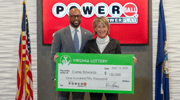America’s aging shift: The risks and what it means for the future
- Replies 0
If you’ve been paying attention to the news—or just looking around at your own family gatherings—you’ve probably noticed a big shift: America is getting older. And not just a little older.
Experts are talking about a full-on “silver tsunami,” with more folks over 65 than ever before and fewer babies being born to balance things out.
But what does this really mean for you, your loved ones, and the country as a whole? Is it a cause for concern, or is there a silver lining to all of this gray?
The US fertility rate now averages about 1.6 children per woman, far below the 2.1 replacement rate needed to keep the population stable without immigration.
This isn’t just an American phenomenon; it’s happening across much of Europe and East Asia, too.
Why the drop? Financial worries, the cost of childcare, shifting cultural norms, and more women pursuing higher education and careers all play a role.
At the same time, fewer unplanned pregnancies and better access to contraception mean families have more control over when and how many children to have.
For many, this is a sign of progress—but it also raises tough questions about the country’s long-term future.

So, what’s the big deal about an aging population? Here’s the crux: as the number of seniors grows and the number of working-age folks shrinks, the balance that keeps the economy and social safety nets humming starts to wobble.
This could mean higher taxes, reduced benefits, or both—unless we find creative solutions.
Family caregiving, already a major responsibility for many, may become even more challenging as the ratio of caregivers to those needing care drops.
This could create a cycle where the next generation is less prepared to succeed, making the problem even worse.
Not so fast! Many experts argue that the dangers of an aging population are often exaggerated. After all, it is known this was coming for decades, and there are plenty of ways to adapt.
Think of it as building a society that works for everyone, from toddlers to centenarians.
From telemedicine to robotic caregivers, the future could be brighter (and more efficient) than what you think.
Also read: Are seniors outnumbering children in your state? Find out now!
Declining birth rates also reflect positive changes. More people—especially women—are able to pursue education, careers, and relationships on their own terms.
Teen pregnancies have plummeted, and families have more tools than ever to plan and space their children.
As Professor Margaret Anne McConnell puts it, “Any time we see people being able to make fertility choices that suit their family, I think that’s a success.”
The key is making sure everyone has the support they need to reach their goals, whether that means having more kids, fewer kids, or none at all.
Read next: Living past 100: Japan reaches nearly 100,000 centenarians, a new record

What do you think? Are you worried about America’s aging population, or do you see it as an opportunity for positive change? Have you experienced the challenges—or the benefits—of these demographic shifts in your own life? What policies or community changes would make the biggest difference for you and your loved ones?
Experts are talking about a full-on “silver tsunami,” with more folks over 65 than ever before and fewer babies being born to balance things out.
But what does this really mean for you, your loved ones, and the country as a whole? Is it a cause for concern, or is there a silver lining to all of this gray?
The US fertility rate now averages about 1.6 children per woman, far below the 2.1 replacement rate needed to keep the population stable without immigration.
This isn’t just an American phenomenon; it’s happening across much of Europe and East Asia, too.
Why the drop? Financial worries, the cost of childcare, shifting cultural norms, and more women pursuing higher education and careers all play a role.
At the same time, fewer unplanned pregnancies and better access to contraception mean families have more control over when and how many children to have.
For many, this is a sign of progress—but it also raises tough questions about the country’s long-term future.

Declining birth rates don’t only reflect challenges—they also highlight progress in personal choice and opportunity. Image source: Roberto Nickson / Unsplash
So, what’s the big deal about an aging population? Here’s the crux: as the number of seniors grows and the number of working-age folks shrinks, the balance that keeps the economy and social safety nets humming starts to wobble.
1. Fewer Workers, More Retirees
With fewer young people entering the workforce, there are simply not as many people paying into Social Security, Medicare, and other programs that support older Americans.This could mean higher taxes, reduced benefits, or both—unless we find creative solutions.
2. Strain on Healthcare and Caregiving
Older adults tend to need more medical care, and with fewer younger workers (including nurses, doctors, and home health aides), the system could get stretched thin.Family caregiving, already a major responsibility for many, may become even more challenging as the ratio of caregivers to those needing care drops.
3. Economic Growth Slows Down
A smaller workforce can mean slower economic growth, less innovation, and fewer people to fill essential jobs. Some worry this could lead to a less dynamic, less prosperous society.4. Shifting Priorities: Kids vs. Seniors
As budgets get tighter, there’s a risk that investments in children—like education, childcare, and health—could take a back seat to programs for seniors.This could create a cycle where the next generation is less prepared to succeed, making the problem even worse.
Not so fast! Many experts argue that the dangers of an aging population are often exaggerated. After all, it is known this was coming for decades, and there are plenty of ways to adapt.
1. Planning Makes Perfect
The real danger isn’t aging itself—it’s failing to plan for it. Countries that invest in smart policies, like walkable communities, family-friendly workplaces, and high-quality healthcare, can help people of all ages thrive.Think of it as building a society that works for everyone, from toddlers to centenarians.
2. Technology to the Rescue
Automation and new technologies can help fill gaps in the workforce, making it easier to care for more people with fewer hands.From telemedicine to robotic caregivers, the future could be brighter (and more efficient) than what you think.
3. Immigration as a Lifeline
Welcoming immigrants can help balance out the population and keep the economy growing. Many countries are rethinking their immigration policies to attract younger workers and families.4. Rethinking Retirement
Encouraging older adults to stay in the workforce longer—if they want to—can help ease the strain. Flexible work, lifelong learning, and age-friendly workplaces are all part of the solution.Also read: Are seniors outnumbering children in your state? Find out now!
Declining birth rates also reflect positive changes. More people—especially women—are able to pursue education, careers, and relationships on their own terms.
Teen pregnancies have plummeted, and families have more tools than ever to plan and space their children.
As Professor Margaret Anne McConnell puts it, “Any time we see people being able to make fertility choices that suit their family, I think that’s a success.”
The key is making sure everyone has the support they need to reach their goals, whether that means having more kids, fewer kids, or none at all.
Read next: Living past 100: Japan reaches nearly 100,000 centenarians, a new record
Key Takeaways
- A major concern with an aging population is the risk of having too few working-age people to support the growing number of seniors, which can strain pension and health care systems unless they're adapted to the new demographic reality.
- Policymakers risk under-investing in children as resources shift towards supporting older generations, potentially impacting the future workforce's health and productivity.
- Many experts believe the danger lies not in aging itself but in failing to plan for it, stressing the importance of adaptable retirement policies, investments in healthcare, automation, and infrastructure that benefit all age groups.
- While declining birth rates can create economic challenges, they also reflect greater individual choice and societal progress, with fewer unintended young pregnancies and more women able to access education and control their fertility.






